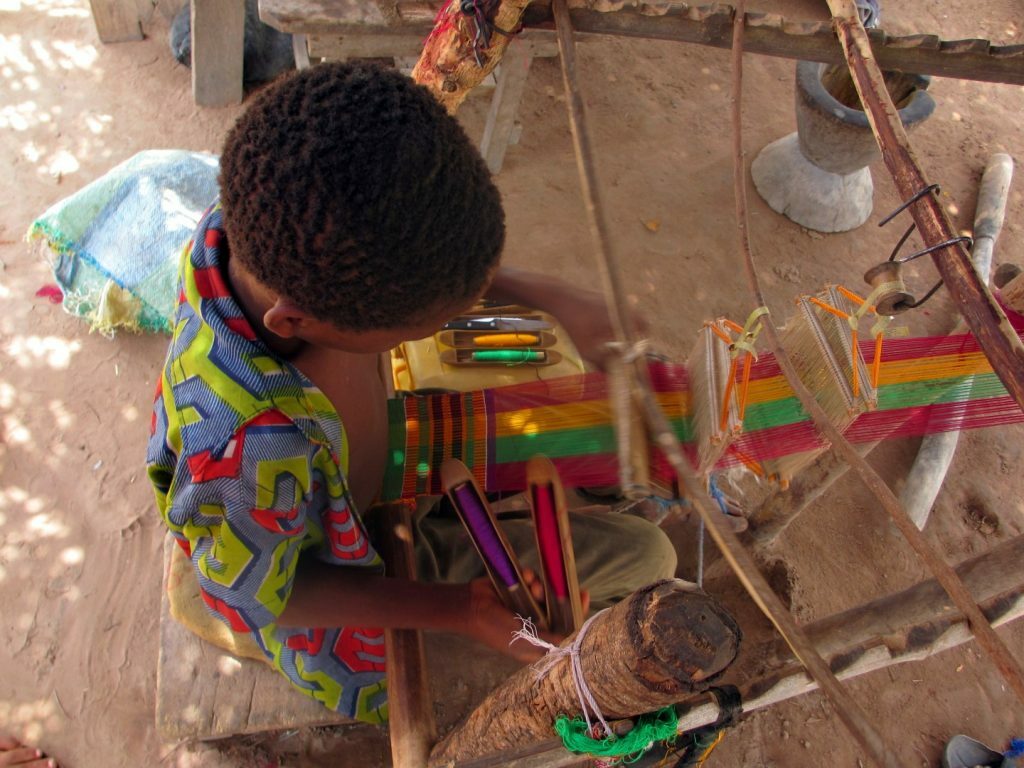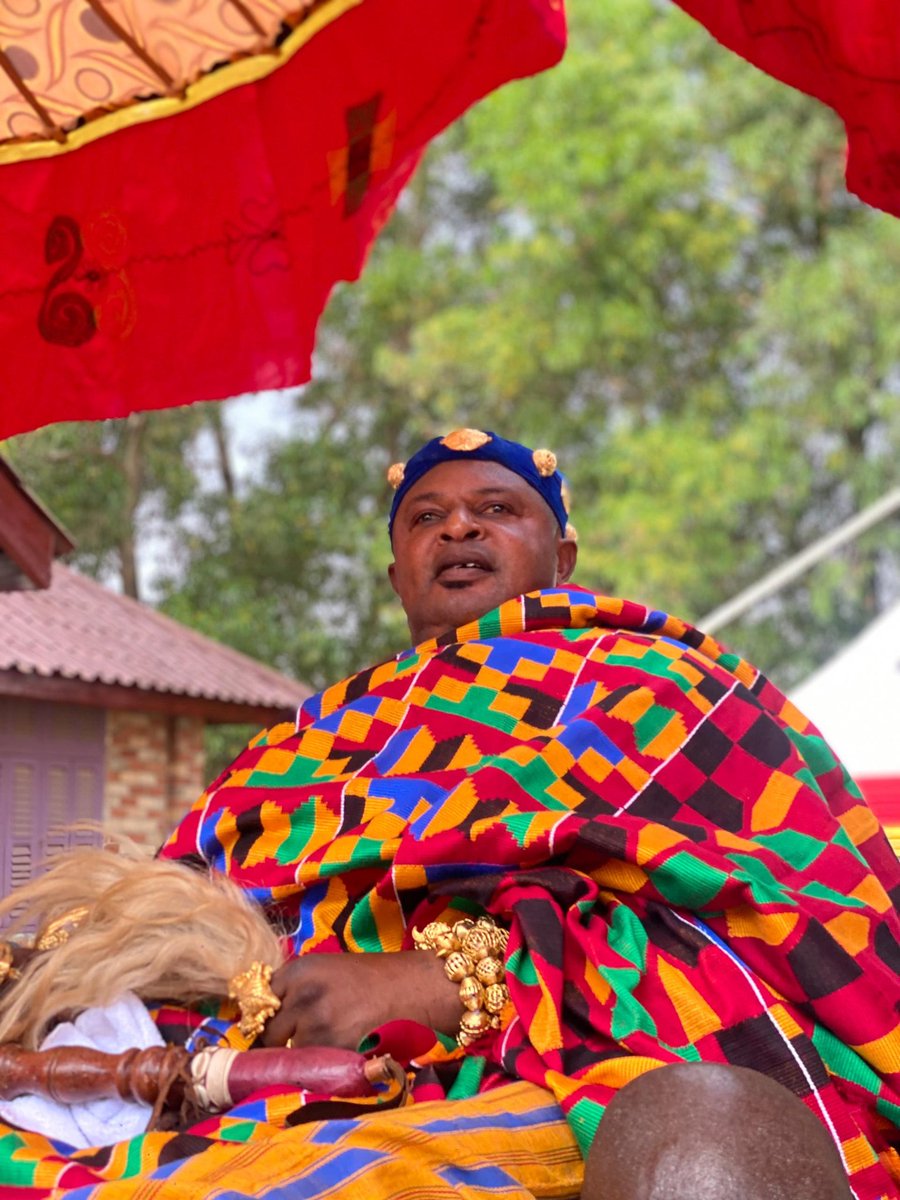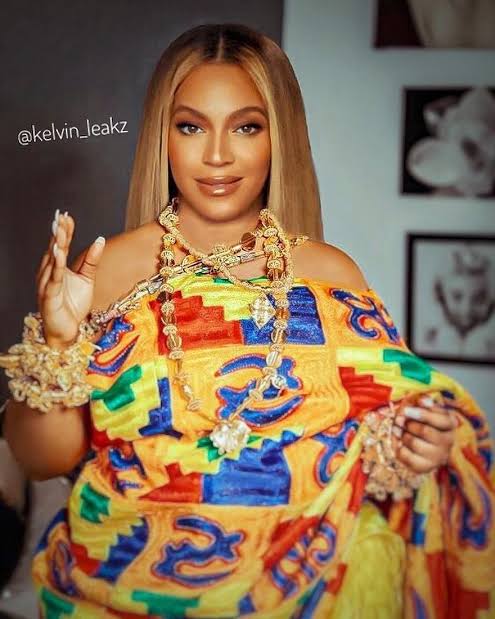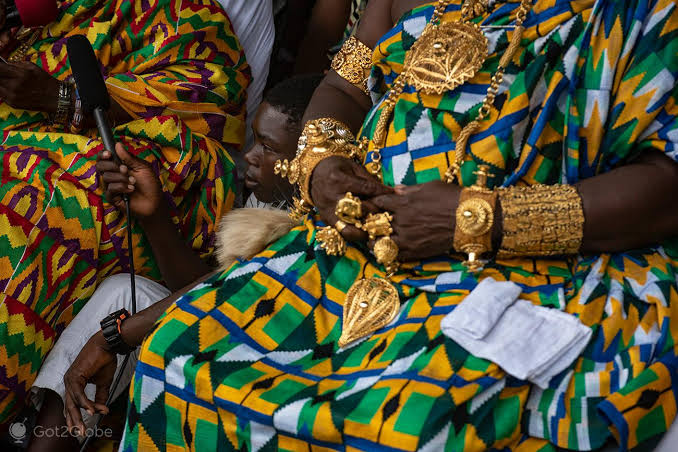Kente is by far one of Africa's most influential piece of clothing material in terms of cross-continental representation. This indigenous fabric first discovered centuries ago has been widely used to symbolize cultural affiliations from West Africa across the diaspora.
The Kente center of the world is the village of Bonwire, Ghana. According to Asante mythology, it was here that great trickster Ananse the Spider, ever skillful and cunning, spun a web of intricate detail in the jungle. When Nana Koragu and Nana Ameyaw, brothers and weavers by trade, came upon Ananse’s web, its immaculate beauty enchanted them. After studying Anansi’s handiwork, the pair returned to the village and began to weave Kente.
The Kente center of the world is the village of Bonwire, Ghana. According to Asante mythology, it was here that great trickster Ananse the Spider, ever skillful and cunning, spun a web of intricate detail in the jungle. When Nana Koragu and Nana Ameyaw, brothers and weavers by trade, came upon Ananse’s web, its immaculate beauty enchanted them. After studying Anansi’s handiwork, the pair returned to the village and began to weave Kente.

Kente fashion on display
Historical documentation indicates textile production among the Akan and Ewe peoples began as early as 1000 B.C. Kente cloth as we know it today with its rich bold colors emerged among the Asante during the seventeenth century A.D., as Chief Oti Akenten (from whose name Kente derives – “basket” in Twi) established trade routes from the Middle and Far East bringing into the Asante Empire a variety of foodstuffs, gems, dyes, leather goods, and silk fabric. Chief Akenten commissioned the new cloth to be spun for royal ritual attire.
Kente is a meaningful sartorial device, as every aspect of its aesthetic design is intended as communication.
The colors of the cloth each hold symbolism: gold = status/serenity, yellow = fertility, green = renewal, blue = pure spirit/harmony, red = passion, black = union with ancestors/spiritual awareness.
Kente is a meaningful sartorial device, as every aspect of its aesthetic design is intended as communication.
The colors of the cloth each hold symbolism: gold = status/serenity, yellow = fertility, green = renewal, blue = pure spirit/harmony, red = passion, black = union with ancestors/spiritual awareness.

A child weaving Kente fabric

A Ghanian Royal adorned in Kente
Men traditionally wear Kente wrapped over their shoulders in the style of a Roman toga while women wear it in two pieces, an ankle-length dress and a shawl that could double as a baby sling. Each block, pattern, and color has a distinct name and meaning, and the cloth often includes adinkra symbols, which represent concepts or sayings.
Kente appeared on the radar of most African-Americans in 1958 when Kwame Nkrumah, the first prime minister of independent Ghana, wore the cloth to meet with President Eisenhower at the White House. Coinciding with the civil Rights and African decolonization movements, Black Americans associated Kente cloth with black politics and the dignity of the African heritage.
Kente appeared on the radar of most African-Americans in 1958 when Kwame Nkrumah, the first prime minister of independent Ghana, wore the cloth to meet with President Eisenhower at the White House. Coinciding with the civil Rights and African decolonization movements, Black Americans associated Kente cloth with black politics and the dignity of the African heritage.

Queen of Pop Beyonce dressed in Kente
